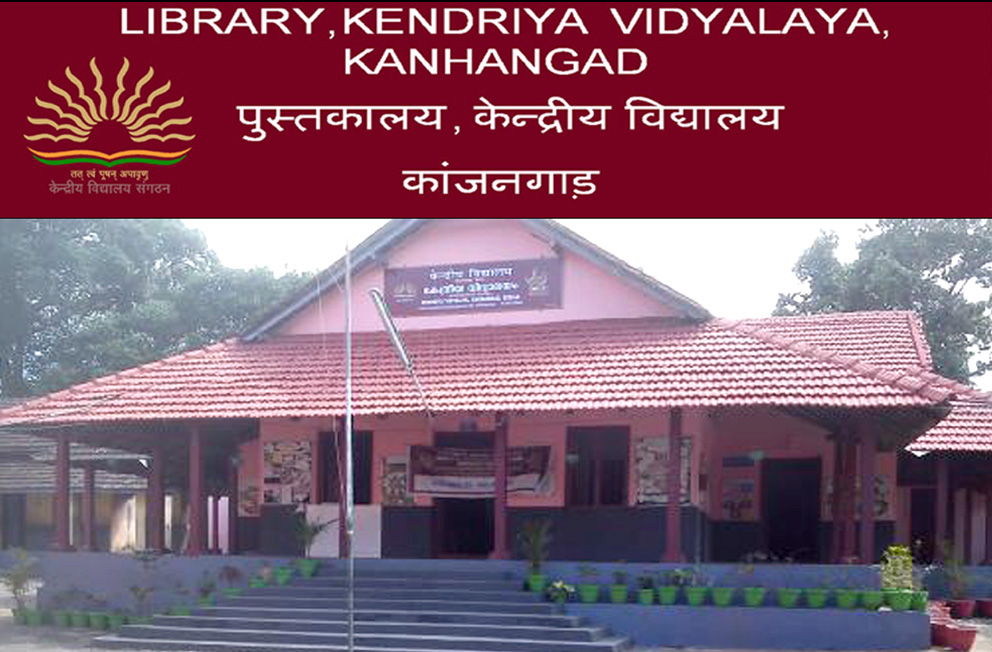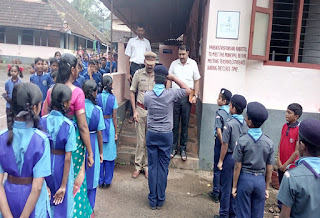Saturday 30 September 2017
Friday 22 September 2017
INTERNATIONAL PEACE DAY
INTERNATIONAL PEACE DAY
In school we observed International peace day, Talk on NOBEL PEACE PRIZE WINNERS, and dressed up on various personalities.
The 17 Sustainable Development Goals
End poverty in all its forms everywhere
End hunger, achieve food security and improved nutrition
Ensure healthy lives and promote well-being for all at all ages
Ensure inclusive and equitable quality education
Achieve gender equality and empower all women and girls
Ensure availability and sustainable management of water and sanitation for all
Ensure access to affordable, reliable, sustainable, and modern energy for all
Promote sustained, inclusive and sustainable economic growth
Build resilient infrastructure, promote inclusive, sustainable industrialization
Reduce inequality within and among countries
Make cities and human settlements inclusive, safe, resilient and sustainable
Ensure sustainable consumption and production patterns
Take urgent action to combat climate change
Conserve and sustainably use the oceans, seas and marine resources
Protect, restore and promote sustainable use of terrestrial ecosystems
Promote peaceful and inclusive societies, justice for all, and build effective, accountable and inclusive institutions
Strengthen the means of implementation and revitalize global partnerships
The International Day of Peace (“Peace Day”) is observed around the world each year on 21 September. Established in 1981 by unanimous United Nations resolution 36/37, the General Assembly has declared this as a day devoted to“commemorating and strengthening the ideals of peace both within and among all nations and peoples.”
Sunday 27 August 2017
Saturday 26 August 2017
Sunday 20 August 2017
ENGLISH FLASH CARDS
- LETTER TO THE EDITOR
- SELF DISCIPLINE
- AN INTERVIEW WITH AN AUTHOR
- KNOW YOUR ENGLISH
- DELHI - A GAS CHAMBER
- DENTIST AND THE CROCODILE BY ROALD DAHL
- ODE TO AUTMN BY JOHN KEATS
- ODE ON SOLITUDE BY ALEXANDER POPE
- GITANJALI VERSE 36
- GITANJALI(POEM NO.48)
- LOCKED OUT
- HARDWORK REWARDED
- A VISIT TO THE ZOO
- SUDDEN ILLNESS
- THE EXAM AFTER MATH
- ROOM CLEANING
- BUYING A CAR
- THE WINNERS
- A FOOTBALL CAMP
- AN IMPORTANT INVITATION
- THE PERFECT COTTAGE
- A TRIP TO THE SEASIDE
- A SURPRISE TEST
- GARDENING
- DIETING
- BURGLARY
- CHOOSING A PRESNT
- CHANGE IN SUBJECT
- A MISSING PASSPORT
- ARTS AND CRAFTS
- ENERGY
- MIZORAM
- INDIAN RAILWAYS
- ARISTOTLE (PHILOSOPHY)
- OBESITY
- OVERCOMING STRESS
- OLYMPIC GAMES
- THE SKY
- PACIFIC OCEAN
- POLAR REGIONS
- GLOBAL WARMING_CLIMATE CHANGING
- INDIAN NAVY
- GENDER EQUALITY
- BOOK REVIEW -THE DISCOVERY OF INDIA
- GLACIERS
- RIVER GANGA
- Dr. S RADHAKRISHNAN
- GREEN REVOLUTION
- YOGA
- CONVERSATION IN DIFFERENT TOPICS (21-50CARDS)
- CONVERSATIONS (1-20 CARDS)
- SPEECH FREEDOM AT MIDNIGHT
WORK SHEETS
- Primary Worksheets
- English Language Teaching Resources
- English Worksheets
- Dictionary Worksheets
- Thesaurus Worksheets
- Synonyms worksheets
- Research Skills Worksheets
- English Grammar and usage worksheets
- Maths worksheets
- Reading Comprehension worksheets
- Worksheets of all subjects
- English Pronunciation
- Worksheets, activities, Lesson plans of all the subject
- Primary class wise all subjects worksheets
- Algebra Worksheets, Quiz and Activities
- Social Science Worksheets, Quiz & Activities.
- Pawan Blog (Primary Resources)
- Super Teacher Worksheets
- Worksheets of class classes subjectwise (Studiestoday.com)
- Printable worksheets (Kidslearningstation.com)
- Flash cards
- Study material of all subjects for classes
- X and XII English sentence correction worksheets
Tuesday 8 August 2017
About Adolescence Education Programme (AEP)
Profile of Young People:
India is home to 253 million adolescents; young people in the age group of 10-19 years who comprise 21% of the country’s population (Census, 2011). Not only does this cohort represent India’s future in the economic realm, but its experience, attitudes and behaviours will largely determine whether India is able to realize the vision of an equitable civil society envisaged in its constitution.
Fortunately for all of us, adolescents see the challenges before them in fresh ways and are responding with enthusiasm and imagination. With the right investments, they can reach their full potential as individuals, leaders and agents of progress. And the world clearly needs their energy, participation and skills. But delivering this transformation requires collective action on education, health, employment and a commitment to real civic engagement by diverse stakeholders including, Government Departments, academia, development partners and civil society organisations.
Sixty one percent boys and 53% girls in the age group of 15-19 (National Sample Survey, 66th Round, 2013)are enrolled in schools and these numbers are likely to increase making schools important spaces for reaching out to adolescents. In school settings, students not only acquire knowledge but also imbibe values, develop an understanding of social norms that finally influence their behaviours. School education also plays an important role in reinforcing or challenging stereotypes among young people. School-based interventions are feasible and cost effective as school going adolescents are easily accessible. Importantly, schools also have a social standing and recognition as institutions of learning. Hence, any intervention implemented through schools has enhanced credibility and acceptability.
The Life Stage of Adolescence
Adolescence is a very special period of a person’s life where an individual assumes a sense of self-identity and is marked by a myriad of emotions including enthusiasm, idealism, self-doubt and anxiety. It is a transitional phase between childhood and adulthood and is characterised by a number of physical, emotional, cognitive, intellectual and attitudinal changes.
Need for Adolescence Education:
Adolescence Education (AE) has been conceptualised as an educational response to the need for support, encouragement, clarifications and information that adolescents often express in order to make sense of their rapidly changing world.
Adolescence Education (AE) is guided by the National Curriculum Framework (NCF), 2005 which recommends that education should instil ‘independence of thought and action, sensitivity to others’ well-being and feelings, learning to respond to new situations in a flexible and creative manner, predisposition towards participation in democratic processes, and the ability to work towards and contribute to economic processes and social change.” Based on these principles, AE aims to provide young people with accurate, age appropriate and culturally relevant information; promote healthy attitudes and develop skills to enable them to respond to real-life situations effectively.
The Adolescence Education Programme (AEP)
At the national level, the Adolescence Education Programme (AEP) is co-ordinated by the National Council of Educational Research and Training (NCERT) in partnership with the Ministry of Human Resource Development (MHRD) and United Nations Population Fund (UNFPA). This programme is a major initiative within the larger Quality Improvement in Schools Scheme of MHRD.
The guiding principles of Adolescence Education clearly articulate that adolescents should be recognised as a positive and valuable resource that needs to be respected and appreciated rather than being treated as a problem, AEP should contribute towards realising the transformational potential of education and that the programme should enable adolescents to articulate their issues, know their rights, counter, shame and fear, build self-esteem and confidence, and develop ability to take on responsibility for self, relationships and (to an extent) the society around them. The guiding principles also recommend that AEP should influence the entire school curriculum and ethos rather than being a stand-alone program.
AEP Implementation Strategy
The interventions include support for integration of life skills and adolescent concerns in the learning materials of National Institute of Open Schooling (NIOS) at the secondary level. The other important program component is implemented through schools in the Navodaya Vidyalaya Samiti (NVS) and Kendriya Vidyalaya Sangathan (KVS). This program component works through a cascade training approach that has created a pool of school system and board specific master trainers who orient nodal teachers who are further entrusted with the responsibility of transacting life skills based education to school students (classes 8, 9 and 11, ages 13 through 18) using interactive methodologies.
To facilitate the nodal teachers to transact life skills based education in the classroom, NCERT, with support from UNFPA has developed training and resource materials that recommend a minimum of 23 hours of transaction around the themes of understanding changes during adolescence and being comfortable with them, establishing and maintaining positive and responsible relationships, understanding and challenging stereotypes and discrimination related to gender and sexuality, recognizing and reporting abuse and violation, prevention of substance misuse and HIV/AIDS. To create an enabling environment for the implementation of the AE programme, advocacy sessions are organized with principals of participating schools and sensitisation sessions are held with parents.
Thursday 3 August 2017
NATIONAL DIGITAL LIBRARY OF INDIA
NATIONAL DIGITAL LIBRARY OF INDIA LINK
Educational materials are available for user ranging from primary to postgraduate
Educational materials are available for user ranging from primary to postgraduate
The
National Digital Library (NDL India) is an all-digital library that stores
information (metadata) about different types of digital contents including
books, articles, videos, audios, thesis and other educational materials
relevant for users from varying educational levels and capabilities. It
provides a single-window search facility to access digital contents currently
existing in India as well as other digital sources under a single umbrella.
Who all can be
benefited by NDL India?
NDL
India has been designed to benefit all kinds of users like students (of all
levels), teachers, researchers, librarians, library users, professionals,
differently abled users and all other lifelong learners.
There are so many Digital
Libraries. How is NDL India different from them?
NDL India will provide a single
window search facilities to act as a one-stop shop for all digital resources.
Information can be personalized based on the education level, choice of
language, difficulty level, media of content and such other factors while other
Digital libraries may not include all these choices. This is like a 'customised
service' provided in a 24x7 integrated environment to suit a user's requirement
and will be like a one-stop shop for all.
There are so many
Digital Libraries. How is NDL India different from them?
NDL India will provide a single
window search facilities to act as a one-stop shop for all digital resources.
Information can be personalized based on the education level, choice of
language, difficulty level, media of content and such other factors while other
Digital libraries may not include all these choices. This is like a 'customised
service' provided in a 24x7 integrated environment to suit a user's requirement
and will be like a one-stop shop for all.
There are so many Digital Libraries. How
is NDL India different from them?
NDL
India will provide a single window search facilities to act as a one-stop shop
for all digital resources. Information can be personalized based on the
education level, choice of language, difficulty level, media of content and
such other factors while other Digital libraries may not include all these
choices. This is like a 'customized service' provided in a 24x7 integrated
environment to suit a user's requirement and will be like a one-stop shop for
all.
Tuesday 1 August 2017
Monday 31 July 2017
Wednesday 26 July 2017
Subscribe to:
Posts (Atom)




























